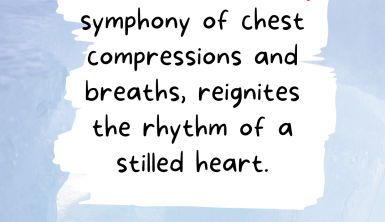It is common for workplaces in all industries to appoint fire safety officers or wardens. This is because specialized training is meant to kick in during emergencies, ensuring trained responders can take action and move everyone to safety. Lacking emergency-specific training can prove to be not just detrimental in a crisis, but fatal to those whose lives a medical professional is entrusted to care for.
In a fire emergency at a medical facility, only two words are required to mobilize relevant personnel. That is “Code Red.”
What is Code Red in a hospital?
A hospital may declare a Code Red if a member of staff or visitor believes there is a fire on the premises. For example, if they believe they are inhaling or seeing smoke or if doors or walls grow heated to the touch. Alternatively, they may perceive flames.
The location of the code is announced. For instance, “Code Red ICU.” When time allows, staff workers at a technologically linked institution may also be notified via their smartphones first. They may hear the alarm before the intercom announcement, allowing them to act rapidly before patients and staff in the hospital panic.
While many professionals would be needed to transport patients to safety, others will be needed to examine burns, smoke inhalation, and frequently accident-related trauma injuries. And it must all be done while displaying that your institution has the issue under control — to the greatest extent feasible — in order to avoid fear and the resulting health emergencies.
The RACE system is used in several Code Red hospital processes to remind workers of the priority order in a Code Red medical emergency.
The RACE system is:
- Rescue – Assist persons who are in urgent danger. When it is safe to do so, this may entail transporting critical patients who require life-sustaining apparatus or someone who has been harmed by the fire.
- Alarm- Pull the alarm to notify the hospital.
- Confine – Close any doors that are easily accessible to slow the spread of fire.
- Extinguish – Grab a fire extinguisher and try to put out the fire as soon as possible while waiting for emergency responders to arrive.
Individual Advantages of Code Red Instruction
When it comes to licensure, all Registered Nurses must have Basic Life Support (BLS) certification. Advanced Cardiac Life Support (ACLS) certification is essential for RNs working in ICU. In general, BLS must be gained prior to ACLS as a requirement to guarantee the professional understands the fundamentals and gets the most use of ACLS training.
Pediatric Advanced Life Support (PALS) certification is necessary for RNs who deal with children. Whenever that certificate lapses, you might have to re-certify.
However, even if certification is not necessary for a specific function, receiving these and other essential training courses while an RN, LPN, Hospitalist, EMT, and so on can:
- Increase your chances of advancement inside a company, even if you’ve worked there for a while.
- Provide you with the information and self-assurance you must have to stay calm throughout a code red situation and save lives.
- Increase your potential earnings for the same or a higher-level position.
- Increase your chances of finding a position at your preferred hospital or other organization.
The Advantages of Code Red Team Training
Even if their licensing does not demand it, having staff educated throughout the facility in lifesaving and quality-of-life-preserving practices might enhance results when a large-scale emergency, such as a Code Red hospital incident, stresses medical resources.
Despite this, even Registered Nurses, whom many on the floor would see as leaders, are not legally obliged in most areas to receive lifesaving disaster training beyond BLS. And, unless they work in the emergency department, intensive care unit, or neonatal intensive care unit, they are unlikely to have considerable expertise in any emergency situation, Code Red or otherwise. Even if they have a broad notion about what to do next, survival chances may be poor without specialist training.
Code Red hospital certification for both medical and non-clinical employees may help you manage these delicate circumstances and, while not a guarantee, can provide much-needed protection against spurious litigation.
And, with group rates on Code Red training available, entire teams may reach this increased degree of preparation while staying within the hospital’s budget. With the possibility of an emergency becoming a catastrophe because of lack of training, why take the risk? A well-trained team operates functionally and fluidly, as is proven in medical settings every day.
Who Requires Code Red Training?
Everyone who is accountable for those who may be unable to manage themselves in the event of a fire would benefit from receiving code red continuous training. Medical and non-medical staff members in the following fields are included:
- Employees in nursing homes and senior facilities
- Employees of a rehabilitation facility
- Employees in medical facilities
- Employees in psychiatric facilities
What type of Code Red instruction do I require?
- Hospital Staff (Non-medical)
- Emergency Medical Staff
- General Medical Staff
What You’ll Learn During Code Red Training: Fundamental Life Support (BLS)
Just as an orthopedist will not heal a fracture in the same way they did ten years ago, continued experience and medical research are always refining our insight into the best methods to save people and raise prospects for a better quality of life. This is why regular re-training is always beneficial.
If you’re new to BLS, Chain of Survival is everything. When a person experiences a cardiac, respiratory, or any similar incident, the very first individual on the scene is frequently a nurse or even non-medical personnel. This individual needs to recognize what they can do right away to improve the patient chances of survival. This cycle continues when more medical workers come and utilize lifesaving gadgets, drugs, and more complex treatments as required by the medical situation at hand.
A BLS course teaches your staff how to identify various emergency circumstances and initiate a Chain of Survival. This frequently includes:
- Recognizing when airways are clogged or obstructed, they must be cleared.
- Compressions of the chest (CPR)
- External cardioversion (AED)
- Breathing assistance (CPR)
However, BLS is just the beginning. CPR, AED, as well as first aid, build upon the knowledge so that, in the event of a genuine Code Red, all care workers are confident in taking lifesaving procedures.
First Aid, CPR, and AED
CPR and First Aid certification training prepares people for a range of potential crises that may occur as a result of a Code Red medical alarm or even at seemingly innocuous times inside a healthcare setting, such as:
- Asthma flare-up
- An allergic reaction to food
- Burns
- Choking
- Diabetes-related coma
- External bruising
- Inhaling harmful gasses
- Corrosive chemical contact
- Poisoning
- Possible neck/spine damage — When and how to move a person if movement is the only way to save their life during an active fire.
- Stroke
- Seizure
If you’ve already finished BLS, you’ll go over and build on your knowledge of CPR and AED as taught in BLS training.
Pediatric Advanced Life Support (PALS)
You may be surprised to find that in-hospital mortality rates for newborns and children who suffer cardiac episodes are 65 percent. Although 80 to 90% make it through the event, they do not make it to the point of discharge, according to current research. Furthermore, many children that survive these incidents develop lasting neurological abnormalities that interfere with learning and function. Depending upon how Code Red occurs in the hospital, there might be a lot of small lives at stake.
These little individuals have unique requirements, and someone who is familiar with adult or teenage CPR may not be effective with a tiny child.
A PALS course teaches you about:
- The many responsibilities involved and the priorities if you just have a small resuscitation team.
- How does basic life support alter at different ages? What are the procedures?
- Infant and child advanced life support
What tools are required for PALS or how would they work?
Examples of frequent circumstances where CPR is a vital tool to have.
Pathogens in Blood
Blood-borne pathogens do not cease to be contagious just because we are dealing with a Code Red medical emergency.
Blood-borne infections such as Hepatitis B, Hepatitis C, and HIV can hinder rescue attempts and instill anxiety in medical staff who hadn’t been informed on how to keep safe when in an emergency. That was especially evident during the HIV pandemic of the 1980s and 1990s. Even though we now know a great deal more about the condition, this remains true for the uneducated.
As a result, it’s critical that everyone understand the dangers and how to handle them throughout a Code Red situation in a medical facility.
Professionals who take a Blood Pathogens certification will learn:
- How blood-borne infections spread and how readily they are transmitted
- How to identify exposure risk
- How to keep that risk level under control
- How to identify the necessary PPE and how to utilize Personal Protective Equipment Correctly (PPE)
- And what you should do as a medical professional or medical staff member if you are exposed to blood-borne pathogens
- The significance of receiving related immunizations, even as a non-medical staff member of a healthcare facility
- Cleaning up a known blood-borne pathogen-infested area, and the responsibility of non-medical staff in cleaning up said areas
Acute Cardiac Life Support
ACLS certification saves lives, and evidence supports the need for critical care nurses to have ACLS certification, as supported by this group of papers. And it can provide physicians who do not often work around an emergency situation or in areas where cardiac incidents are prevalent with the assurance, that they possess the training they require throughout a Code Red medical event.
ACLS supplements what is taught in the BLS certification training. In this class, you and your team will investigate:
- A summary of what was covered in Basic Life Support
- Recognizing the signs of cardiac and respiratory distress
- Early intervention for people experiencing cardiac arrest or respiratory distress
- Identifying additional potentially serious heart-related concerns that may occur during a code red situation
- Managing a number of cardiac issues
- Maintaining and opening the airway of patients in suspected cardiac incidents
- Medication used in ACLS
- What to do first in a Code Red situation: What should medical staff do right away?
- How to Maintain Effective Communication in an ACLS Team Setting
This training class includes coursework that demonstrates why it is critical for teams to receive the same certification in order to function productively together. An adequately trained staff will perform lifesaving tasks with more fluidity and possess the skills that are necessary for medical staff during a Code Red scenario.
Airborne Pathogens and Pandemic Scenarios
Healthcare professionals were exposed to a unique coronavirus danger while performing lifesaving treatments on patients during the COVID-19 pandemic. Education and training such as this can ensure personnel stays safe in circumstances involving airborne pathogens.
It is absolutely essential for all medical staff and non-medical support staff to understand and take precautions against pathogens, both blood-borne and airborne. Emphasizing PPE use and proper exposure reporting techniques are covered during this training. It is imperative that proper procedures are followed, even during a Code Red hospital event.







